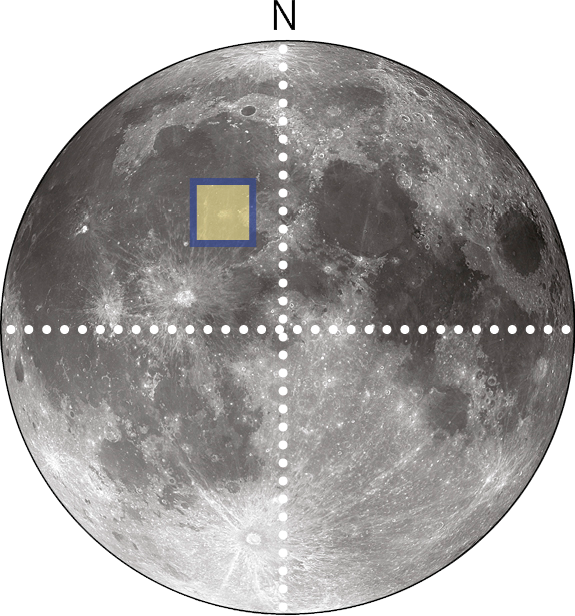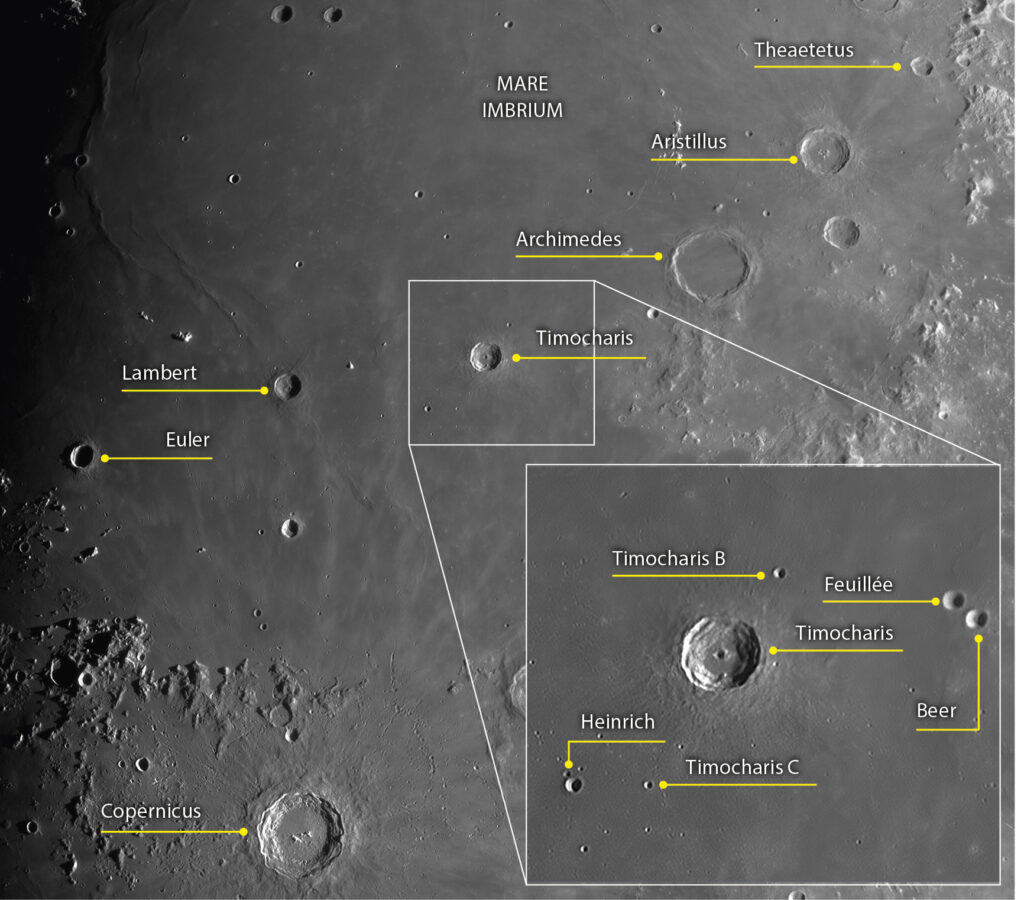March’s top lunar feature to observe

Timocharis
Type: Crater
Size: 35km
Longitude/latitude: 13.1° W, 26.7° N
Age: 1.1–3.2 billion years
Best time to see: One day after first quarter (28 February and 1 March) or last quarter (15 March)
Minimum equipment: 50mm refractor
Timocharis is a sharp-rimmed crater located within the vast 1,250km-diameter Imbrium Basin. It lies within the mismatched arc of craters starting at 25km Theaetetus, progressing through 55km Aristillus, 83km Archimedes, 35km Timocharis, 30km Lambert and concluding with 28km Euler. Timocharis lies 550km north-northeast of 93km Copernicus, within the extensive Copernican ray system which is easily visible in the southern half of Mare Imbrium.
An appreciable ejecta rampart surrounds Timocharis’s polygonal rim, fairly symmetrical in appearance and stretching for around 30km from the main rim edge. Its rim appears well-defined and internally the initial wall fall-off is extremely steep down to a ‘shelf’. From there, the elevation falls in an irregular fashion towards the main crater floor and central mountain complex. The crater’s depth from rim edge to floor is around 3km.
“A low Sun will help pick out the 4.4km depression at the centre”
The central mountain complex is interesting because it doesn’t exist – when you observe Timocharis, it soon becomes evident that the mountain region is occupied by a depression. This appears a particularly well-targeted impact, the resulting craterlet completely obliterating Timocharis’s central mountain.
As a result of the crater’s internal up and downs, Timocharis is fascinating to observe when either the morning or evening terminator is nearby. The low Sun angle really helps pick out the detail in the inner terraces and, with larger instruments, the 4.4km depression at the crater’s centre.
A transient lunar phenomenon, or TLP, was the term used to describe shortlived events that changed the appearance of the Moon’s surface; this could be changes in colour or brightness of specific regions. Recorded for at least 1,000 years, transient lunar phenomenon reports have sometimes been controversial. Reports were often submitted from a single observer and met with a degree of scepticism. They are less common today, but still reported and coordinated. The abbreviation now tends to relate more to the growing study of lunar impact flashes.
A couple of notable TLP events are associated with Timocharis. One relates to the observer David Barcroft (1897–1974) who reported the crater to be “filled with vapour and very indistinct near full Moon”. Another relates to VA Firsoff who reported a red glow inside Timocharis on 8 and 10 October 1954. This was followed by the crater showing a blue brightening on 3 August 1955, an event observed through a blue filter. Whether the observed phenomena were real is uncertain, but it’s fair to say that TLP events are expected to occur on the Moon, just not at the frequency at which they were observed.
More conventional views of Timocharis against the lava of Mare Imbrium reveal few features in the crater’s immediate vicinity. A tiny 2.2km craterlet sits just outside the rim edge to the east. 43km northeast of Timocharis’s centre is 5km bowl-shaped Timocharis B. Look in the other direction, 64km to the southwest and you’ll arrive at 4km Timocharis C. This is located to the east of 8km Heinrich.
